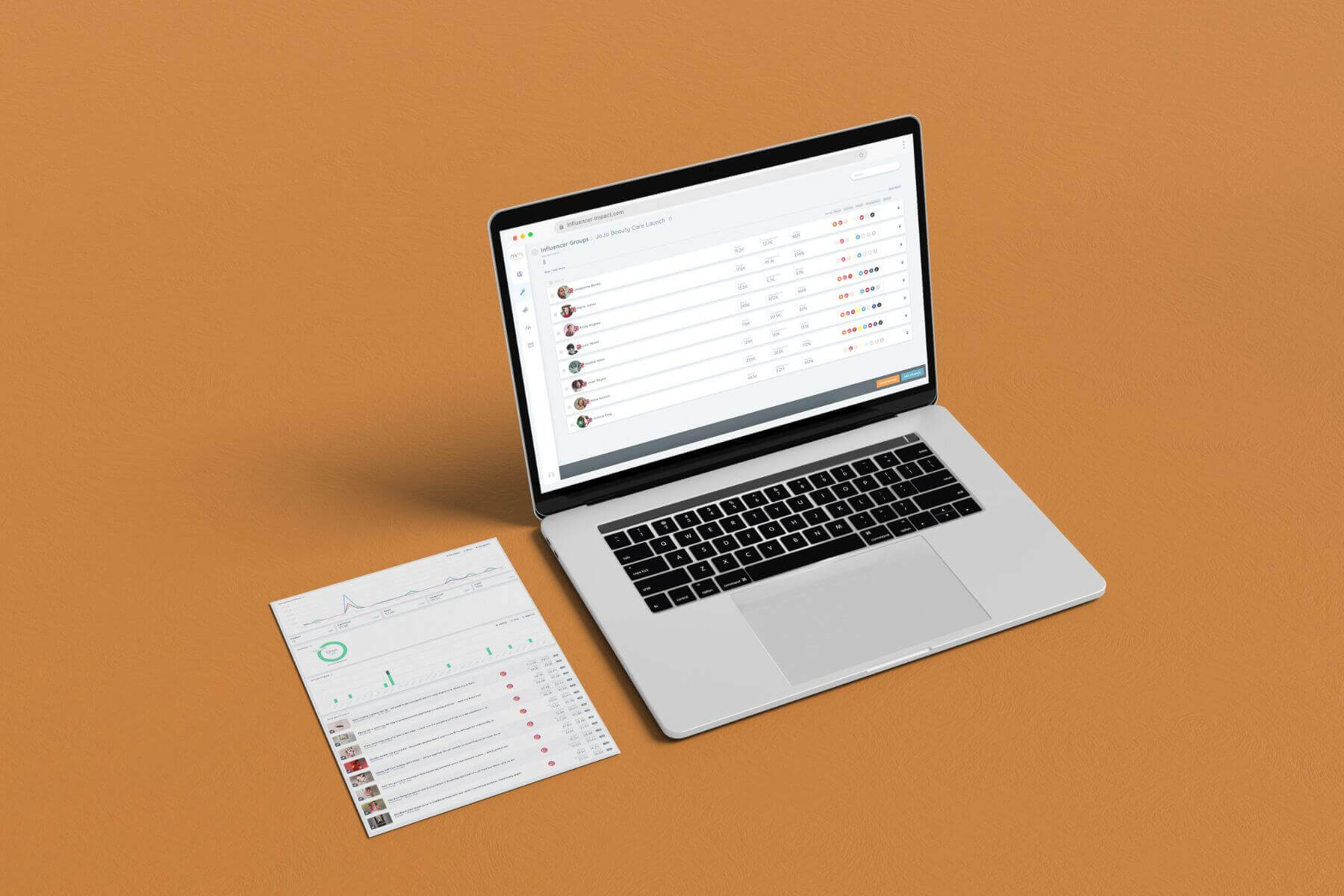When beauty brands first started working with influencers, the goal posts weren’t completely clear. Many marketers were still navigating social media, and trying to identify what constitutes ‘value’. However, now we realise the power of awareness, engagement and tracking influencer activity, brands are gaining a better understanding of how they can link return on investment (ROI) to their campaigns.
That doesn’t mean it’s always easy, though. While sales have long been the ‘holy grail’ metric, the lack of linking from platforms can make measuring sales ROI tricky (although social shopping functionality, like Shoppable Posts, are starting to make that reality). Here, we reveal five steps to identify the impact of your influencer campaigns, ensuring you’re looking at the metrics that truly matter to your brand…
1. Set Your Campaign Goals First
While sales and revenue are always the ultimate goal for beauty brands, social media has taught us a lot about the power of awareness and brand affinity. Unless your influencer is posting Stories with trackable ‘swipe up’ links to your latest product, it can be tricky to trace a boost in sales back to their social content.
But that doesn’t mean their grid posts aren’t valuable. They might trigger an uplift in your follower count or inspire users to find out more about your product via Google. That’s why it’s important to be open-minded to the various other metrics you can track, with impressions, likes, comments, views and shares all offering insight into the impact of campaigns.
According to the Content Marketing Institute, increasing brand awareness is the aim for 86% of influencer marketing campaigns. Reaching new audiences comes up close behind, followed by improving brand advocacy, increasing sales conversions and managing the brand reputation.
2. Analyse Impressions
Once you’ve identified your goals, you need to link them back to an appropriate metric. In many cases, impressions are the key target, as they reflect brand awareness and audience reach. MMI used to work on an engagement model, where there was value placed on each like, view or comment. However, MMI Media now uses an impressions-based model, in line with paid social best practice.
Impressions can be used in their own right to measure ROI, or they can be utilised to calculate the earned media value (EMV) of your beauty influencer campaign. They tell you how many times that new product post has been seen by users, so you can begin to understand how visible your latest launch is.
They can also help you better frame engagements or reach. For example, a high impressions-to-reach ratio tells you the content is so compelling that users keep coming back. Similarly, by dividing post engagements by impressions, you will have an engagement rate that can be benchmarked against past activity or your competitors’ campaigns.

3. Understand Stories Metrics
Instagram Stories presents a big opportunity in influencer marketing, but the format isn’t without its challenges when it comes to tracking performance. The content only lasts for 24 hours, meaning it has a less enduring presence than grid posts, and you often need the influencer’s permission to track.
However, MMI’s Influencer Connect service allows you to capture related Instagram Stories, removing the need to do this manually, or to ask the influencer to supply related posts. Bonus tip: make sure you provide each influencer with a unique URL for ‘swipe up’ links, so you can track direct traffic coming from their social channels.
4. Go Granular
Each of these metrics – including EMV – should never be used in isolation. Granularity of data is crucial, as this will tell you if you’re truly meeting campaign objectives. Details to keep in mind include:
- Frequency of posting, meaning how many mentions your product received from the influencer.
- Longevity of content. Many influencers delete paid content as they don’t want to be seen to be doing too much paid work. This highlights the need for timely tracking and capturing results as the campaign is unfolding, as well as on completion.
- Key messaging. Ensure the product benefits are correctly communicated, alongside relevant hashtags and retailer credits.
- Analyse your product’s exposure compared to that of your competitors.
5. Standardise Media Analysis
Finally, it’s vital that you standardise your media analysis. This is especially true if you’re working on a global brand and creating campaigns across territories. This ensures that, from one market to the next, you can compare and benchmark activity, as well as identifying where in the world a new launch has really taken off.
Standardisation across media types is important, too. If your measurement is media-specific, you won’t be able to compare value between social, digital and print coverage. They may each have different pricing models, but in MMI’s platform they’re treated as equivalent. This way, you can see where your brand is having the most impact.
But, Wait – What About TikTok?
More and more beauty brands are using TikTok. However, because it’s a newer platform, the industry is only just beginning to figure out how to measure performance. Here’s what we know: views and reach are the key cogs that make their algorithm ‘tick’ and, according to ByteDance, the number of followers bears less importance. MMI has been gathering data to see what patterns emerge, so watch this space – insight on TikTok metrics is coming your way very soon.
To find out more about how MMI can help you identify, track and measure your Influencer Marketing campaigns – including Instagram Stories and TikTok – get in touch on info@mymarketinsight.com
How We Can Help
We are specialists in Media and eCommerce data analytics for the beauty industry. Learn more about how we can help you with your digital disruption by emailing us at info@mmi-analytics.com
Up next: discover three things you need to know when investing in a brand ambassador.




